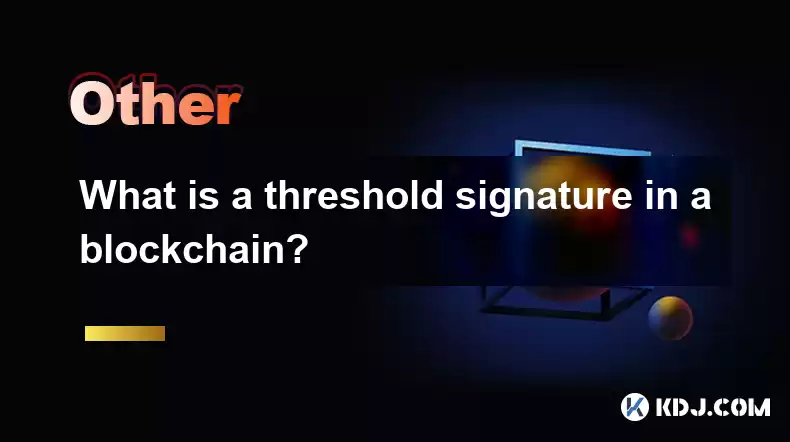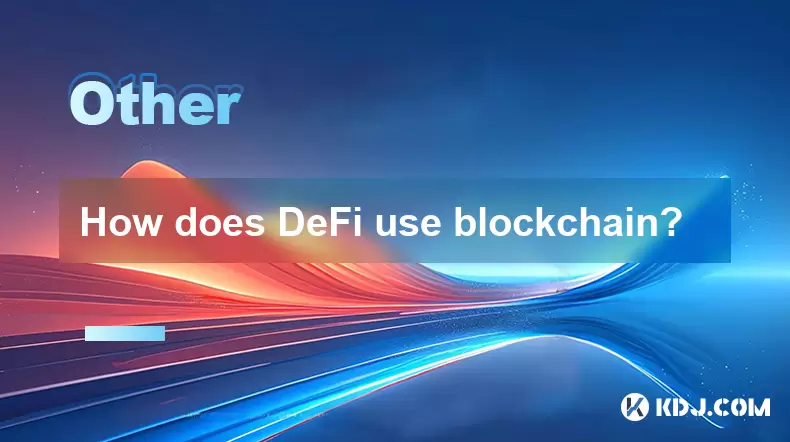-
 Bitcoin
Bitcoin $114400
1.70% -
 Ethereum
Ethereum $3501
3.13% -
 XRP
XRP $2.918
4.28% -
 Tether USDt
Tether USDt $0.9999
0.02% -
 BNB
BNB $753.8
2.00% -
 Solana
Solana $162.1
2.74% -
 USDC
USDC $0.9998
0.00% -
 TRON
TRON $0.3262
1.30% -
 Dogecoin
Dogecoin $0.1992
3.24% -
 Cardano
Cardano $0.7255
4.15% -
 Hyperliquid
Hyperliquid $38.54
5.34% -
 Stellar
Stellar $0.3965
7.51% -
 Sui
Sui $3.452
3.84% -
 Chainlink
Chainlink $16.29
4.05% -
 Bitcoin Cash
Bitcoin Cash $542.0
2.99% -
 Hedera
Hedera $0.2480
8.54% -
 Ethena USDe
Ethena USDe $1.001
0.04% -
 Avalanche
Avalanche $21.46
1.98% -
 Toncoin
Toncoin $3.661
3.45% -
 Litecoin
Litecoin $109.0
3.45% -
 UNUS SED LEO
UNUS SED LEO $8.961
-0.04% -
 Shiba Inu
Shiba Inu $0.00001223
3.33% -
 Polkadot
Polkadot $3.605
3.01% -
 Uniswap
Uniswap $9.167
4.19% -
 Monero
Monero $300.4
3.45% -
 Dai
Dai $1.000
-0.01% -
 Bitget Token
Bitget Token $4.329
2.11% -
 Pepe
Pepe $0.00001050
4.49% -
 Cronos
Cronos $0.1333
6.34% -
 Aave
Aave $259.0
3.64%
What is a threshold signature in a blockchain?
Threshold signatures enhance blockchain security by distributing signing power among multiple parties, reducing single points of failure and supporting decentralization.
Apr 14, 2025 at 10:14 am

A threshold signature in a blockchain context is a cryptographic technique that allows a group of parties to jointly generate and manage a digital signature. Unlike traditional signatures where a single entity signs a message, a threshold signature scheme requires a predetermined number of participants, known as a threshold, to collaborate and produce a valid signature. This method enhances security and decentralization in blockchain systems by distributing the signing power among multiple entities, reducing the risk of a single point of failure.
How Threshold Signatures Work
In a threshold signature scheme, a group of n participants work together to create a signature. The system is set up so that any subset of at least t participants, where t is the threshold, can generate a valid signature. The key components of this process include:
- Key Generation: Each participant generates a private key share. These shares are used to create a public key that can be used to verify signatures.
- Signature Generation: When a signature is needed, participants use their private key shares to create partial signatures. If at least t participants contribute their partial signatures, these can be combined into a full, valid signature.
- Verification: The resulting signature can be verified using the public key, ensuring that it was generated by at least t participants without revealing who they were.
Applications of Threshold Signatures in Blockchain
Threshold signatures have several applications in blockchain technology, enhancing security and functionality:
- Multi-Signature Wallets: These wallets require multiple signatures to authorize transactions, and threshold signatures can be used to manage the signing process more efficiently.
- Decentralized Governance: In decentralized autonomous organizations (DAOs), threshold signatures can ensure that decisions are made with the consent of a sufficient number of members.
- Secure Multi-Party Computation: Threshold signatures can be used to securely perform computations on private data, ensuring that no single party can access the full data set.
Advantages of Threshold Signatures
The use of threshold signatures in blockchain systems offers several advantages:
- Enhanced Security: By distributing the signing power among multiple parties, the risk of a single compromised key leading to unauthorized transactions is significantly reduced.
- Decentralization: Threshold signatures support the decentralized nature of blockchains by ensuring that no single entity has full control over the signing process.
- Flexibility: The threshold can be adjusted based on the specific needs of the system, allowing for different levels of security and efficiency.
Implementing Threshold Signatures in a Blockchain
To implement threshold signatures in a blockchain, several steps need to be followed:
- Choose a Threshold Signature Scheme: There are various schemes available, such as the BLS (Boneh-Lynn-Shacham) signature scheme or the ECDSA (Elliptic Curve Digital Signature Algorithm) with threshold capabilities.
- Set Up the System: Determine the number of participants (n) and the threshold (t). Each participant needs to generate their private key share and contribute to the creation of the public key.
- Integrate with the Blockchain: Modify the blockchain protocol to include the threshold signature functionality. This involves updating the transaction validation process to accept threshold signatures and integrating the key management system.
- Test and Deploy: Thoroughly test the implementation in a controlled environment before deploying it on the main network. Ensure that the system can handle the expected load and that the threshold signature functionality works as intended.
Challenges and Considerations
While threshold signatures offer significant benefits, there are also challenges and considerations to keep in mind:
- Complexity: Implementing threshold signatures can be complex, requiring a deep understanding of cryptography and distributed systems.
- Performance: The process of generating and verifying threshold signatures can be computationally intensive, potentially impacting the performance of the blockchain.
- Key Management: Managing the private key shares securely is crucial, as any compromise could undermine the security of the system.
FAQs
Q: Can threshold signatures be used with any blockchain?
A: Threshold signatures can be integrated with most blockchains, but the specific implementation may vary depending on the blockchain's architecture and the cryptographic algorithms it supports. It is essential to ensure compatibility and to modify the blockchain's protocol accordingly.
Q: How does the threshold value affect the security of the system?
A: The threshold value (t) determines the minimum number of participants required to generate a valid signature. A higher threshold increases security by making it harder for an attacker to compromise enough participants to create a signature. However, it also increases the complexity and potential delays in the signing process.
Q: What happens if a participant loses their private key share?
A: If a participant loses their private key share, the system can still function as long as the threshold (t) can be met with the remaining participants. However, it is crucial to have a secure backup and recovery process in place to restore the lost key share without compromising the security of the system.
Q: Are there any alternatives to threshold signatures for enhancing blockchain security?
A: Yes, alternatives include multi-signature schemes, where all participants must sign a transaction, and homomorphic encryption, which allows computations on encrypted data. Each method has its own advantages and trade-offs in terms of security, efficiency, and complexity.
Disclaimer:info@kdj.com
The information provided is not trading advice. kdj.com does not assume any responsibility for any investments made based on the information provided in this article. Cryptocurrencies are highly volatile and it is highly recommended that you invest with caution after thorough research!
If you believe that the content used on this website infringes your copyright, please contact us immediately (info@kdj.com) and we will delete it promptly.
- Navigating the Wild West: Token Unlocks and Altcoin Surges - A Trader's Guide
- 2025-08-04 02:30:11
- AI, Crypto, and the Frontier: Riding the Wave of Innovation
- 2025-08-04 03:50:11
- Snorter Presale Fuels Meme Coin Frenzy: Price Explosion Incoming?
- 2025-08-04 02:50:12
- Bitcoin, Altcoins, and Momentum: What's Moving the Crypto Markets?
- 2025-08-04 02:30:11
- Punisher Coin Presale: The Meme Coin Primed to Explode (No Joke!)
- 2025-08-04 03:50:11
- Crypto Analysts' August Picks: Beyond Bitcoin and Ethereum
- 2025-08-04 02:50:12
Related knowledge

What is the difference between on-chain and off-chain transactions?
Aug 02,2025 at 04:22pm
Understanding On-Chain TransactionsOn-chain transactions refer to digital asset transfers that are recorded directly on a blockchain ledger. These tra...

What is a node's role in a blockchain network?
Aug 03,2025 at 03:16pm
Understanding the Function of a Node in a Blockchain NetworkA node is a fundamental component of any blockchain network, acting as a participant that ...

How are transactions verified on a blockchain?
Aug 04,2025 at 12:35am
Understanding the Role of Nodes in Transaction VerificationIn a blockchain network, nodes are fundamental components responsible for maintaining the i...

What is the double-spending problem and how does blockchain prevent it?
Aug 02,2025 at 01:07pm
Understanding the Double-Spending ProblemThe double-spending problem is a fundamental challenge in digital currency systems where the same digital tok...

What is the difference between a blockchain and a database?
Aug 01,2025 at 09:36pm
Understanding the Core Structure of a BlockchainA blockchain is a decentralized digital ledger that records data in a series of immutable blocks linke...

How does DeFi use blockchain?
Aug 03,2025 at 11:15pm
Understanding the Role of Blockchain in DeFiDecentralized Finance (DeFi) relies fundamentally on blockchain technology to operate without intermediari...

What is the difference between on-chain and off-chain transactions?
Aug 02,2025 at 04:22pm
Understanding On-Chain TransactionsOn-chain transactions refer to digital asset transfers that are recorded directly on a blockchain ledger. These tra...

What is a node's role in a blockchain network?
Aug 03,2025 at 03:16pm
Understanding the Function of a Node in a Blockchain NetworkA node is a fundamental component of any blockchain network, acting as a participant that ...

How are transactions verified on a blockchain?
Aug 04,2025 at 12:35am
Understanding the Role of Nodes in Transaction VerificationIn a blockchain network, nodes are fundamental components responsible for maintaining the i...

What is the double-spending problem and how does blockchain prevent it?
Aug 02,2025 at 01:07pm
Understanding the Double-Spending ProblemThe double-spending problem is a fundamental challenge in digital currency systems where the same digital tok...

What is the difference between a blockchain and a database?
Aug 01,2025 at 09:36pm
Understanding the Core Structure of a BlockchainA blockchain is a decentralized digital ledger that records data in a series of immutable blocks linke...

How does DeFi use blockchain?
Aug 03,2025 at 11:15pm
Understanding the Role of Blockchain in DeFiDecentralized Finance (DeFi) relies fundamentally on blockchain technology to operate without intermediari...
See all articles

























































































